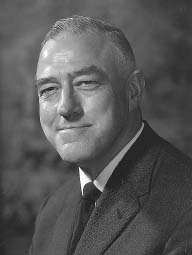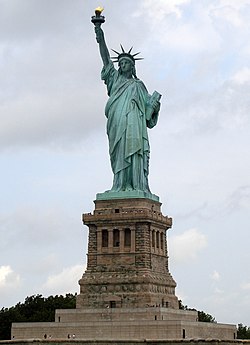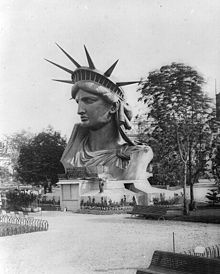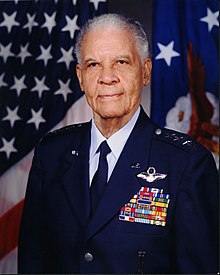 |
| Martin Luther |
Today Highlight's in History: 1517 – Protestant Reformation: Martin Luther posts his 95 Theses on the door of the Castle Church in Wittenberg.
Martin Luther OSA (German: 10 November 1483 – 18 February 1546) was a German friar (Observant Augustinian), Catholic priest, professor of theology and seminal figure of the 16th-century movement in Christianity known later as the Protestant Reformation. He strongly disputed the claim that freedom from God's punishment for sin could be purchased with monetary values.He insisted that, since forgiveness was God's alone to grant, those who claimed that indulgences absolved buyers from all punishments and granted them salvation were in error. Christians, he said, must not slacken in following Christ on account of such false assurances.
In 1516, Johann Tetzel, a Dominican friar and papal commissioner for indulgences, was sent to Germany by the Roman Catholic Church to sell indulgences to raise money to rebuild St. Peter's Basilica in Rome. Roman Catholic theology stated that faith alone, whether fiduciary or dogmatic, cannot justify man; justification rather depends only on such faith as is active in charity and good works (fides caritate formata). The benefits of good works could be obtained by donating money to the church
He confronted the indulgence salesman Johann Tetzel, with his Ninety-Five Theses in 1517. His refusal to retract all of his writings at the demand of Pope Leo X in 1520 and the Holy Roman Emperor Charles V at the Diet of Wormsin 1521 resulted in his excommunication by the Pope and condemnation as an outlaw by the Emperor.
Luther taught that salvation and subsequently eternity in heaven is not earned by good deeds but is received only as a free gift of God's grace through faith in Jesus Christ as redeemer from sin and subsequently eternity in Hell. His theology challenged the authority of the Pope of the Roman Catholic Church by teaching that the Bible is the only source of divinely revealed knowledge from God and opposed sacerdotalism by considering all baptized Christians to be a holy priesthood
HIS LIFE
In 1501, at the age of 19, he entered the University of Erfurt, which he later described as a beerhouse and whorehouse. He was made to wake at four every morning for what has been described as "a day of rote learning and often wearying spiritual exercises." He received his master's degree in 1505.
In accordance with his father's wishes, Luther enrolled in law school at the same university that year but dropped out almost immediately, believing that law represented uncertainty. Luther sought assurances about life and was drawn to theology and philosophy, expressing particular interest in Aristotle, William of Ockham, and Gabriel Biel. He was deeply influenced by two tutors, Bartholomaeus Arnoldi von Usingen and Jodocus Trutfetter, who taught him to be suspicious of even the greatest thinkers and to test everything himself by experience. Philosophy proved to be unsatisfying, offering assurance about the use of reason but none about loving God, which to Luther was more important. Reason could not lead men to God, . For Luther, reason could be used to question men and institutions, but not God. Human beings could learn about God only through divine revelation, he believed, and Scripture therefore became increasingly important to him
HIS ORDINATION.
Luther dedicated himself to the Augustinian order, devoting himself to fasting, long hours in prayer, pilgrimage, and frequent confession. Luther described this period of his life as one of deep spiritual despair. He said, "I lost touch with Christ the Savior and Comforter, and made of him the jailer and hangman of my poor soul." Johann von Staupitz, his superior, pointed Luther’s mind away from continual reflection upon his sins toward the merits of Christ. He taught that true repentance does not involve self-inflicted penances and punishments but rather a change of heart.
In 1507, he was ordained to the priesthood, and in 1508 von Staupitz, first dean of the newly founded University of Wittenberg, sent for Luther, to teach theology. He received a Bachelor's degree in Biblical studies on 9 March 1508, and another Bachelor's degree in the Sentences by Peter Lombard in 1509. On 19 October 1512, he was awarded his Doctor of Theology and, on 21 October 1512, was received into the senate of the theological faculty of the University of Wittenberg, having been called to the position of Doctor in Bible. He spent the rest of his career in this position at the University of Wittenberg.
HIS MARRIAGE: His marriage to Katharina von Bora set a model for the practice of clerical marriage, allowing Protestant priests to marry.
He married Katharina von Bora, one of 12 nuns he had helped escape from the Nimbschen Cistercian convent in April 1523, when he arranged for them to be smuggled out in herring barrels. "Suddenly, and while I was occupied with far different thoughts," he wrote to Wenceslaus Link, "the Lord has plunged me into marriage." At the time of their marriage, Katharina was 26 years old and Luther was 41 years old.
HIS TEACHINGS
The catechism is one of Luther's most personal works. Luther's Small Catechism proved especially effective in helping parents teach their children; likewise the Larger Catechism was effective for pastors. Using the German vernacular they expressed the Apostles' Creed in simpler, more personal, Trinitarian language. He rewrote each article of the Creed to express the character of the Father, the Son, or the Holy Spirit. Luther's goal was to enable the catechumens to see themselves as a personal object of the work of the three persons of the Trinity, each of which works in the catechumen's life. That is, Luther depicted the Trinity not as a doctrine to be learned, but as persons to be known. The Father creates, the Son redeems, and the Spirit sanctifies, a divine unity with separate personalities. Salvation originates with the Father and draws the believer to the Father. Luther's treatment of the Apostles' Creed must be understood in the context of the Decalogue (the Ten Commandments) and the Lord's Prayer, which are also part of the Lutheran catechical teaching.
"The Small Catechism has earned a reputation as a model of clear religious teaching.It remains in use today, along with Luther's hymns and his translation of the Bible.
HIS WRITINGS
Luther published German translation of the New Testament in 1522, and he and his collaborators completed the translation of the Old Testament in 1534, when the whole Bible was published. He continued to work on refining the translation until the end of his life.Others had translated the Bible into German, but Luther tailored his translation to his own doctrine. When he was criticised for inserting the word "alone" after "faith" in Romans 3:28, he replied in part: "The text itself and the meaning of St. Paul urgently require and demand it. For in that very passage he is dealing with the main point of Christian doctrine, namely, that we are justified by faith in Christ without any works of the Law . . . But when works are so completely cut away – and that must mean that faith alone justifies – whoever would speak plainly and clearly about this cutting away of works will have to say, 'Faith alone justifies us, and not works'."
His translation of the Bible into the vernacular (instead of Latin) made it more accessible, which had a tremendous impact on the church and on German culture. It fostered the development of a standard version of the German language, added several principles to the art of translation.The Luther Bible influenced other vernacular translations, such as William Tyndale's English Bible (1525 forward), a precursor of the King James Bible.
HIS HYMNS: His hymns influenced the development of singing in churches.
Luther was a prolific hymn-writer, authoring hymns such as Ein' feste Burg ist unser Gott (A Mighty Fortress Is Our God), based on Psalm 46, and Von Himmel hoch da komm ich her (From Heaven Above to Earth I Come), based on Luke 2:11-12. Luther connected high art and folk music, also all classes, clergy and laity, men, women and children. His tool of choice for this connection was the singing of German hymns in connection with worship, school, home, and the public arena. He often accompanied the sung hymns with a lute, later recreated as the waldzither that became a national instrument of Germany in the 20th century. Luther's hymns were frequently evoked by particular events in his life and the unfolding Reformation.
Luther's 1524 creedal hymn Wir glauben all an einen Gott (We All Believe in One True God) is a three-stanza confession of faith prefiguring Luther's 1529 three-part explanation of the Apostles' Creed in the Small Catechism. Luther's hymn, adapted and expanded from an earlier German creedal hymn, gained widespread use in vernacular
Luther's 1538 hymnic version of the Lord's Prayer, Vater unser im Himmelreich, corresponds exactly to Luther's explanation of the prayer in the Small Catechism, with one stanza for each of the seven prayer petitions, plus opening and closing stanzas. The hymn functioned both as a liturgical setting of the Lord's Prayer and as a means of examining candidates on specific catechism questions.
HIS HEALTH
Luther suffered ill health for years, things like, Ménière's disease, vertigo, fainting, tinnitus, and a cataract in one eye. From 1531 to 1546, his health deteriorated further. The years of struggle with Rome, the antagonisms with and among his fellow reformers, and the scandal which ensued from the bigamy of the Philip of Hesse incident, in which Luther had played a leading role, all may have contributed. In 1536, he began to suffer from kidney and bladder stones, and arthritis, and an ear infection ruptured an ear drum. In December 1544, he began to feel the effects of angina
His poor physical health made him short-tempered and even harsher in his writings and comments. His wife Katharina was overheard saying, "Dear husband, you are too rude," and he responded, "They are teaching me to be rude."
In two of his later works, Luther expressed antagonistic views toward Jews, writing that Jewish synagogues and homes should be destroyed, their money confiscated, and liberty curtailed. These statements and their influence on antisemitism have contributed to his controversial status.
Martin Luther died in 1546, still convinced of the correctness of his Reformation theology, and with his decree of excommunication by Pope Leo X still effective. On his deathbed, Luther was asked: "Are you ready to die trusting in your Lord Jesus Christ and to confess the doctrine which you have taught in his name?" He answered "Yes", before taking his final breath.
Wikipedia
WORLD EVENTS
1517 – Protestant Reformation: Martin Luther posts his 95 Theses on the door of the Castle Church in Wittenberg.
1864 – Nevada is admitted as the 36th U.S. state.
1876 – A monster cyclone ravages India, resulting in over 200,000 deaths.
1913 – Dedication of the Lincoln Highway, the first automobile highway across United States.
1926 – Magician Harry Houdini dies of gangrene and peritonitis that develops after his appendix ruptures.
1938 – Great Depression: In an effort to restore investor confidence, the New York Stock Exchange unveils a fifteen-point program aimed to upgrade protection for the investing public.
1984 – Indian Prime Minister Indira Gandhi is assassinated by two Sikh security guards. Riots break out in New Delhi and other cities and nearly 10,000 Sikhs are killed.
1998 – Iraq disarmament crisis begins: Iraq announces it would no longer cooperate with United Nations weapons inspectors.
1999 – EgyptAir Flight 990 crashes into the Atlantic Ocean killing all 217 people on board.
2000 – Soyuz TM-31 launches, carrying the first resident crew to the International Space Station. The ISS has been crewed continuously since then.
2002 – A federal grand jury in Houston, Texas indicts former Enron chief financial officer Andrew Fastow on 78 counts of wire fraud, money laundering, conspiracy and obstruction of justice related to the collapse of his ex-employer.
2003 – Mahathir bin Mohamad resigns as Prime Minister of Malaysia and is replaced by Deputy Prime Minister Abdullah Ahmad Badawi, marking an end to Mahathir's 22 years in power.
2011 – The global population of humans reaches seven billion. This day is now recognized by the United Nations as Seven Billion Day.
Martin Luther OSA (German: 10 November 1483 – 18 February 1546) was a German friar (Observant Augustinian), Catholic priest, professor of theology and seminal figure of the 16th-century movement in Christianity known later as the Protestant Reformation. He strongly disputed the claim that freedom from God's punishment for sin could be purchased with monetary values.He insisted that, since forgiveness was God's alone to grant, those who claimed that indulgences absolved buyers from all punishments and granted them salvation were in error. Christians, he said, must not slacken in following Christ on account of such false assurances.
In 1516, Johann Tetzel, a Dominican friar and papal commissioner for indulgences, was sent to Germany by the Roman Catholic Church to sell indulgences to raise money to rebuild St. Peter's Basilica in Rome. Roman Catholic theology stated that faith alone, whether fiduciary or dogmatic, cannot justify man; justification rather depends only on such faith as is active in charity and good works (fides caritate formata). The benefits of good works could be obtained by donating money to the church
He confronted the indulgence salesman Johann Tetzel, with his Ninety-Five Theses in 1517. His refusal to retract all of his writings at the demand of Pope Leo X in 1520 and the Holy Roman Emperor Charles V at the Diet of Wormsin 1521 resulted in his excommunication by the Pope and condemnation as an outlaw by the Emperor.
Luther taught that salvation and subsequently eternity in heaven is not earned by good deeds but is received only as a free gift of God's grace through faith in Jesus Christ as redeemer from sin and subsequently eternity in Hell. His theology challenged the authority of the Pope of the Roman Catholic Church by teaching that the Bible is the only source of divinely revealed knowledge from God and opposed sacerdotalism by considering all baptized Christians to be a holy priesthood
HIS LIFE
In 1501, at the age of 19, he entered the University of Erfurt, which he later described as a beerhouse and whorehouse. He was made to wake at four every morning for what has been described as "a day of rote learning and often wearying spiritual exercises." He received his master's degree in 1505.
In accordance with his father's wishes, Luther enrolled in law school at the same university that year but dropped out almost immediately, believing that law represented uncertainty. Luther sought assurances about life and was drawn to theology and philosophy, expressing particular interest in Aristotle, William of Ockham, and Gabriel Biel. He was deeply influenced by two tutors, Bartholomaeus Arnoldi von Usingen and Jodocus Trutfetter, who taught him to be suspicious of even the greatest thinkers and to test everything himself by experience. Philosophy proved to be unsatisfying, offering assurance about the use of reason but none about loving God, which to Luther was more important. Reason could not lead men to God, . For Luther, reason could be used to question men and institutions, but not God. Human beings could learn about God only through divine revelation, he believed, and Scripture therefore became increasingly important to him
HIS ORDINATION.
 |
| Luther as an Augustinian friar |
In 1507, he was ordained to the priesthood, and in 1508 von Staupitz, first dean of the newly founded University of Wittenberg, sent for Luther, to teach theology. He received a Bachelor's degree in Biblical studies on 9 March 1508, and another Bachelor's degree in the Sentences by Peter Lombard in 1509. On 19 October 1512, he was awarded his Doctor of Theology and, on 21 October 1512, was received into the senate of the theological faculty of the University of Wittenberg, having been called to the position of Doctor in Bible. He spent the rest of his career in this position at the University of Wittenberg.
 |
| Katharina von Bora, Luther's wife |
HIS MARRIAGE: His marriage to Katharina von Bora set a model for the practice of clerical marriage, allowing Protestant priests to marry.
He married Katharina von Bora, one of 12 nuns he had helped escape from the Nimbschen Cistercian convent in April 1523, when he arranged for them to be smuggled out in herring barrels. "Suddenly, and while I was occupied with far different thoughts," he wrote to Wenceslaus Link, "the Lord has plunged me into marriage." At the time of their marriage, Katharina was 26 years old and Luther was 41 years old.
HIS TEACHINGS
The catechism is one of Luther's most personal works. Luther's Small Catechism proved especially effective in helping parents teach their children; likewise the Larger Catechism was effective for pastors. Using the German vernacular they expressed the Apostles' Creed in simpler, more personal, Trinitarian language. He rewrote each article of the Creed to express the character of the Father, the Son, or the Holy Spirit. Luther's goal was to enable the catechumens to see themselves as a personal object of the work of the three persons of the Trinity, each of which works in the catechumen's life. That is, Luther depicted the Trinity not as a doctrine to be learned, but as persons to be known. The Father creates, the Son redeems, and the Spirit sanctifies, a divine unity with separate personalities. Salvation originates with the Father and draws the believer to the Father. Luther's treatment of the Apostles' Creed must be understood in the context of the Decalogue (the Ten Commandments) and the Lord's Prayer, which are also part of the Lutheran catechical teaching.
"The Small Catechism has earned a reputation as a model of clear religious teaching.It remains in use today, along with Luther's hymns and his translation of the Bible.
HIS WRITINGS
Luther published German translation of the New Testament in 1522, and he and his collaborators completed the translation of the Old Testament in 1534, when the whole Bible was published. He continued to work on refining the translation until the end of his life.Others had translated the Bible into German, but Luther tailored his translation to his own doctrine. When he was criticised for inserting the word "alone" after "faith" in Romans 3:28, he replied in part: "The text itself and the meaning of St. Paul urgently require and demand it. For in that very passage he is dealing with the main point of Christian doctrine, namely, that we are justified by faith in Christ without any works of the Law . . . But when works are so completely cut away – and that must mean that faith alone justifies – whoever would speak plainly and clearly about this cutting away of works will have to say, 'Faith alone justifies us, and not works'."
 |
| Luther's 1534 Bible |
HIS HYMNS: His hymns influenced the development of singing in churches.
 |
| An early printing of Luther's hymn A Mighty Fortress Is Our God (Ein' feste Burg ist unser Gott) |
Luther was a prolific hymn-writer, authoring hymns such as Ein' feste Burg ist unser Gott (A Mighty Fortress Is Our God), based on Psalm 46, and Von Himmel hoch da komm ich her (From Heaven Above to Earth I Come), based on Luke 2:11-12. Luther connected high art and folk music, also all classes, clergy and laity, men, women and children. His tool of choice for this connection was the singing of German hymns in connection with worship, school, home, and the public arena. He often accompanied the sung hymns with a lute, later recreated as the waldzither that became a national instrument of Germany in the 20th century. Luther's hymns were frequently evoked by particular events in his life and the unfolding Reformation.
Luther's 1524 creedal hymn Wir glauben all an einen Gott (We All Believe in One True God) is a three-stanza confession of faith prefiguring Luther's 1529 three-part explanation of the Apostles' Creed in the Small Catechism. Luther's hymn, adapted and expanded from an earlier German creedal hymn, gained widespread use in vernacular
Luther's 1538 hymnic version of the Lord's Prayer, Vater unser im Himmelreich, corresponds exactly to Luther's explanation of the prayer in the Small Catechism, with one stanza for each of the seven prayer petitions, plus opening and closing stanzas. The hymn functioned both as a liturgical setting of the Lord's Prayer and as a means of examining candidates on specific catechism questions.
HIS HEALTH
Luther suffered ill health for years, things like, Ménière's disease, vertigo, fainting, tinnitus, and a cataract in one eye. From 1531 to 1546, his health deteriorated further. The years of struggle with Rome, the antagonisms with and among his fellow reformers, and the scandal which ensued from the bigamy of the Philip of Hesse incident, in which Luther had played a leading role, all may have contributed. In 1536, he began to suffer from kidney and bladder stones, and arthritis, and an ear infection ruptured an ear drum. In December 1544, he began to feel the effects of angina
His poor physical health made him short-tempered and even harsher in his writings and comments. His wife Katharina was overheard saying, "Dear husband, you are too rude," and he responded, "They are teaching me to be rude."
In two of his later works, Luther expressed antagonistic views toward Jews, writing that Jewish synagogues and homes should be destroyed, their money confiscated, and liberty curtailed. These statements and their influence on antisemitism have contributed to his controversial status.
 |
| Luther on his deathbed by Lucas Cranach the Elder |
Martin Luther died in 1546, still convinced of the correctness of his Reformation theology, and with his decree of excommunication by Pope Leo X still effective. On his deathbed, Luther was asked: "Are you ready to die trusting in your Lord Jesus Christ and to confess the doctrine which you have taught in his name?" He answered "Yes", before taking his final breath.
Wikipedia
WORLD EVENTS
1517 – Protestant Reformation: Martin Luther posts his 95 Theses on the door of the Castle Church in Wittenberg.
1864 – Nevada is admitted as the 36th U.S. state.
1876 – A monster cyclone ravages India, resulting in over 200,000 deaths.
1913 – Dedication of the Lincoln Highway, the first automobile highway across United States.
1926 – Magician Harry Houdini dies of gangrene and peritonitis that develops after his appendix ruptures.
1938 – Great Depression: In an effort to restore investor confidence, the New York Stock Exchange unveils a fifteen-point program aimed to upgrade protection for the investing public.
1984 – Indian Prime Minister Indira Gandhi is assassinated by two Sikh security guards. Riots break out in New Delhi and other cities and nearly 10,000 Sikhs are killed.
1998 – Iraq disarmament crisis begins: Iraq announces it would no longer cooperate with United Nations weapons inspectors.
1999 – EgyptAir Flight 990 crashes into the Atlantic Ocean killing all 217 people on board.
2000 – Soyuz TM-31 launches, carrying the first resident crew to the International Space Station. The ISS has been crewed continuously since then.
2002 – A federal grand jury in Houston, Texas indicts former Enron chief financial officer Andrew Fastow on 78 counts of wire fraud, money laundering, conspiracy and obstruction of justice related to the collapse of his ex-employer.
2003 – Mahathir bin Mohamad resigns as Prime Minister of Malaysia and is replaced by Deputy Prime Minister Abdullah Ahmad Badawi, marking an end to Mahathir's 22 years in power.
2011 – The global population of humans reaches seven billion. This day is now recognized by the United Nations as Seven Billion Day.















